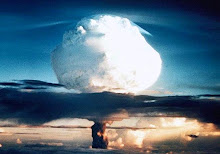Wednesday, March 4, 2009
Monday, March 2, 2009
A dry port (sometimes inland port) is an inland intermodal terminal directly connected by road or rail to a seaport and operating as a centre for the transshipment of sea cargo to inland destinations.[1]
In addition to their role in cargo transshipment, dry ports may also include facilities for storage and consolidation of goods, maintenance for road or rail cargo carriers and customs clearance services. The location of these facilities at a dry port relieves competition for storage and customs space at the seaport itself.
“Intermodal freight transport involves the transportation of freight in container or vehicle, using multiple modes of transportation (rail, ship, and truck), without any handling of the freight itself when changing modes. The method reduces cargo handling, and so improves security, may reduce damages and loss, and may allow freight to be transported faster. Reduced costs versus over road trucking is the key benefit for intracontinental use.” [source: Wikipedia]
Dimensions and payloads
There are five common standard lengths, 20-ft (6.1 m), 40-ft (12.2 m), 45-ft (13.7 m), 48-ft (14.6 m), and 53-ft (16.2 m). United States domestic standard containers are generally 48 ft (15 m) and 53-ft (rail and truck). Container capacity is often expressed in twenty-foot equivalent units (TEU, or sometimes teu). An equivalent unit is a measure of containerized cargo capacity equal to one standard 20 ft (length) × 8 ft (width) container. As this is an approximate measure, the height of the box is not considered, for instance the 9 ft 6 in (2.9 m) High cube and the 4-ft 3-in (1.3 m) half height 20 ft (6.1 m) containers are also called one TEU. Similarly, the 45-ft (13.7 m) containers are also commonly designated as two TEU, although they are 45 and not 40 feet (12 m) long. Two TEU are equivalent to one forty-foot equivalent unit (FEU).
The use of Imperial measurements to describe container size (TEU, FEU) reflects the fact that US Department of Defense played a major part in the development of containers. The overwhelming need to have a standard size for containers, in order that they fit all ships, cranes, and trucks, and the length of time that the current container sizes have been in use, makes changing to an even metric size impractical.
The maximum gross mass for a 20 ft (6.1 m) dry cargo container is 30,480 kg, and for a 40-ft (including the 2.87 m (9 ft 6 in) high cube container), it is 34,000 kg. Allowing for the tare massof the container, the maximum payload mass is therefore reduced to approximately 28,380 kg for 20 ft (6.1 m), and 30,100 kg for 40 ft (12 m) containers.[9]
Since November 2007 48-ft and 53 ft (16 m) containers are used also for international ocean shipments. At the moment (April 2008) the only ocean company who offer such containers isAPL[10]. However, APL containers have slightly different sizes and weights than standard 48 ft (15 m) and 53 ft (16 m) containers (that are used in the US by rail and truck services).
-- source: Wikipedia
